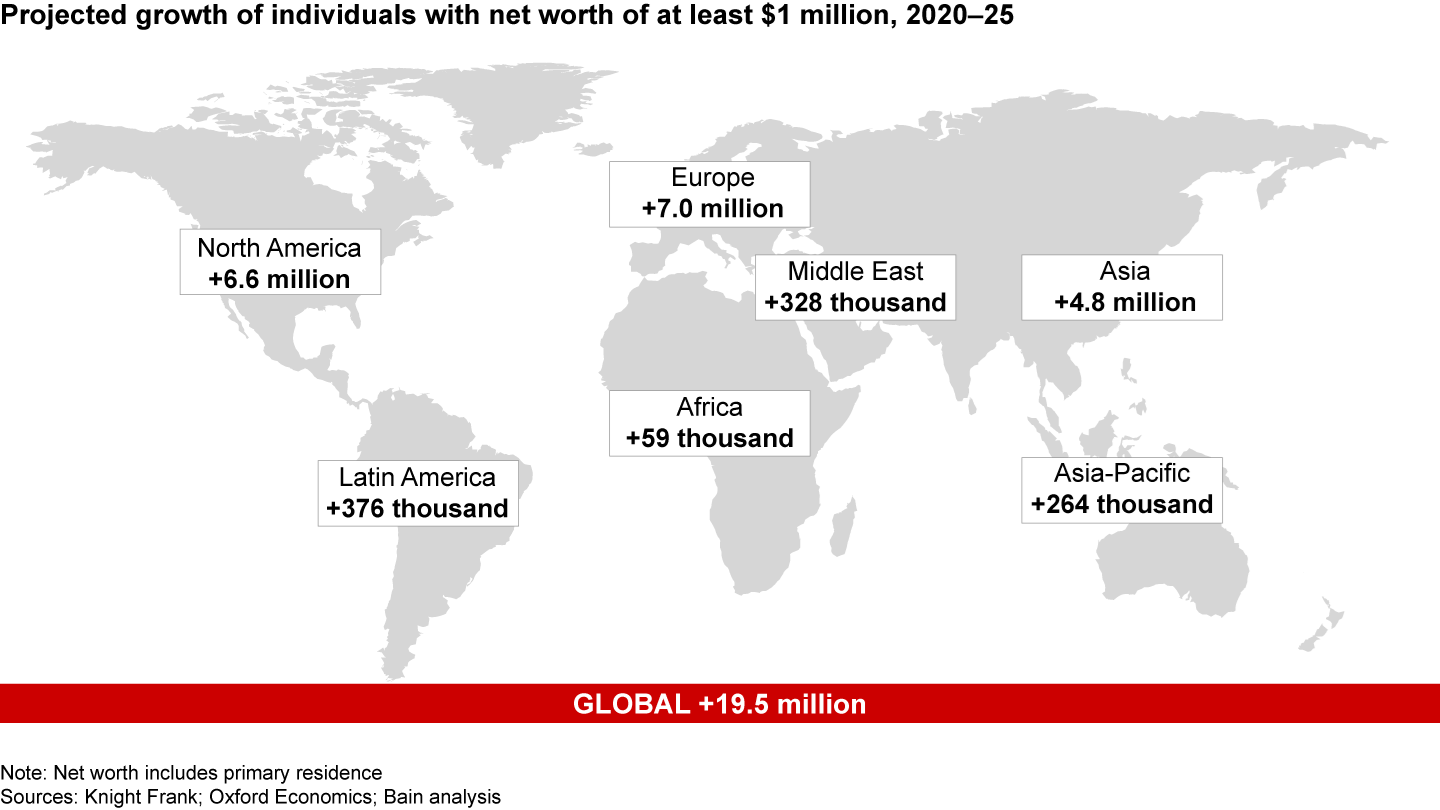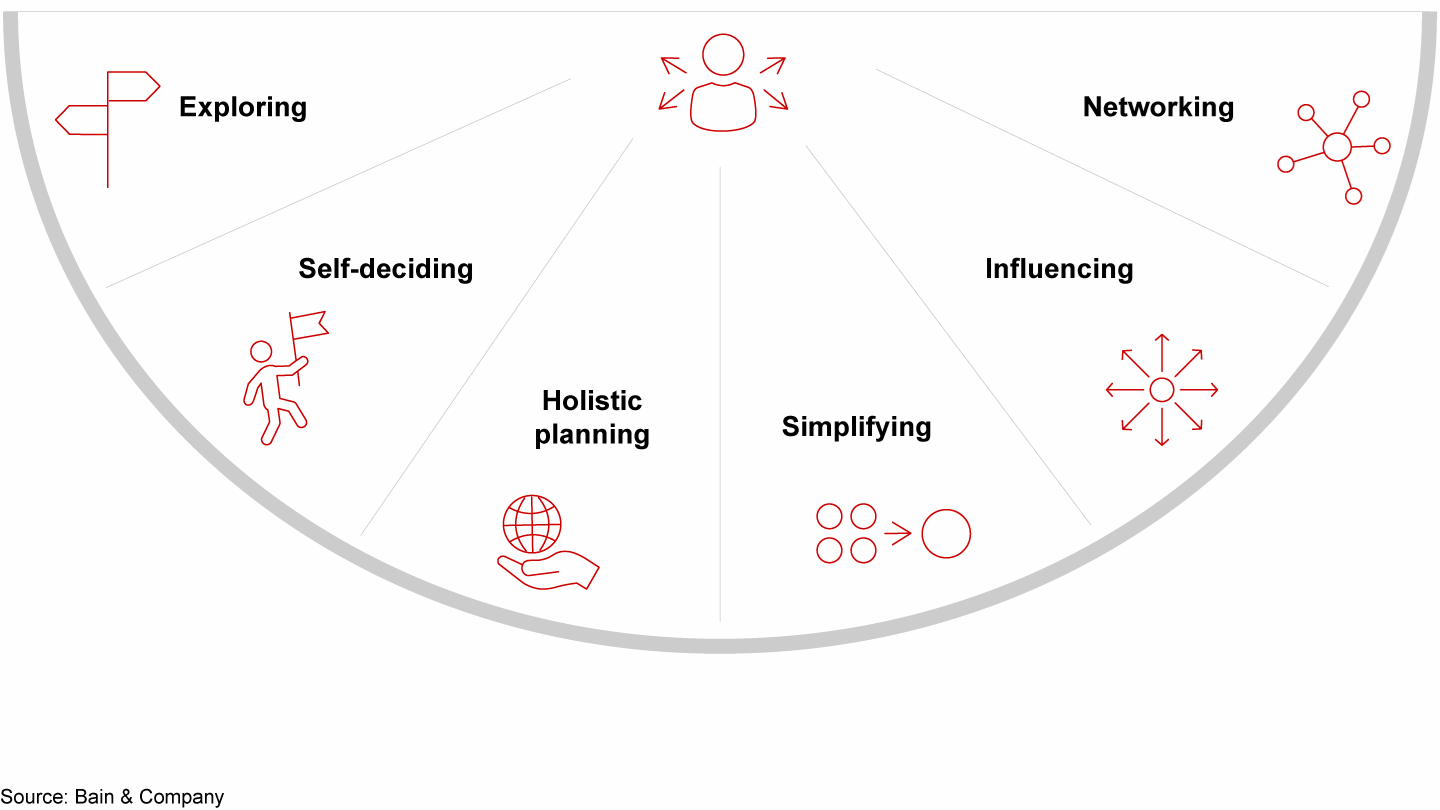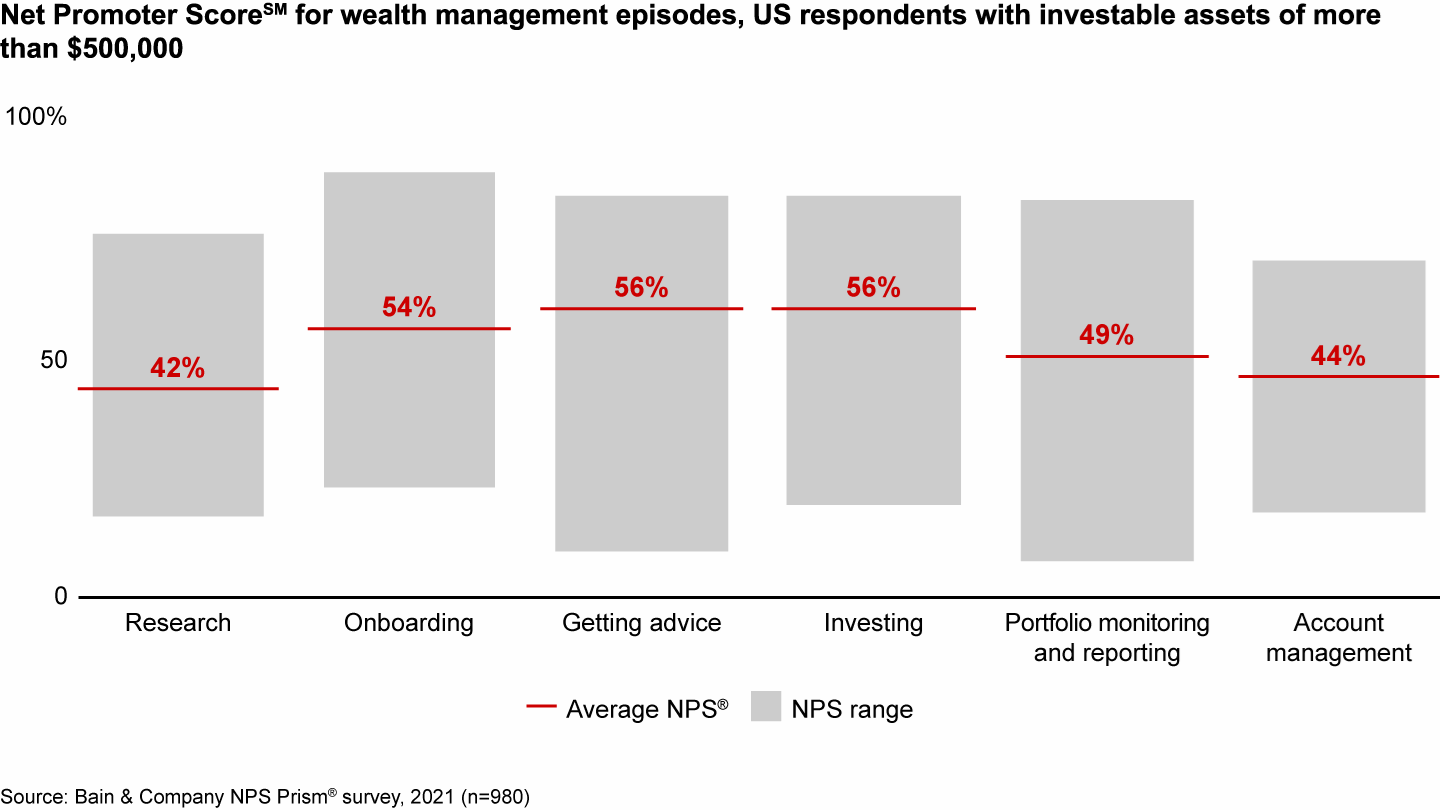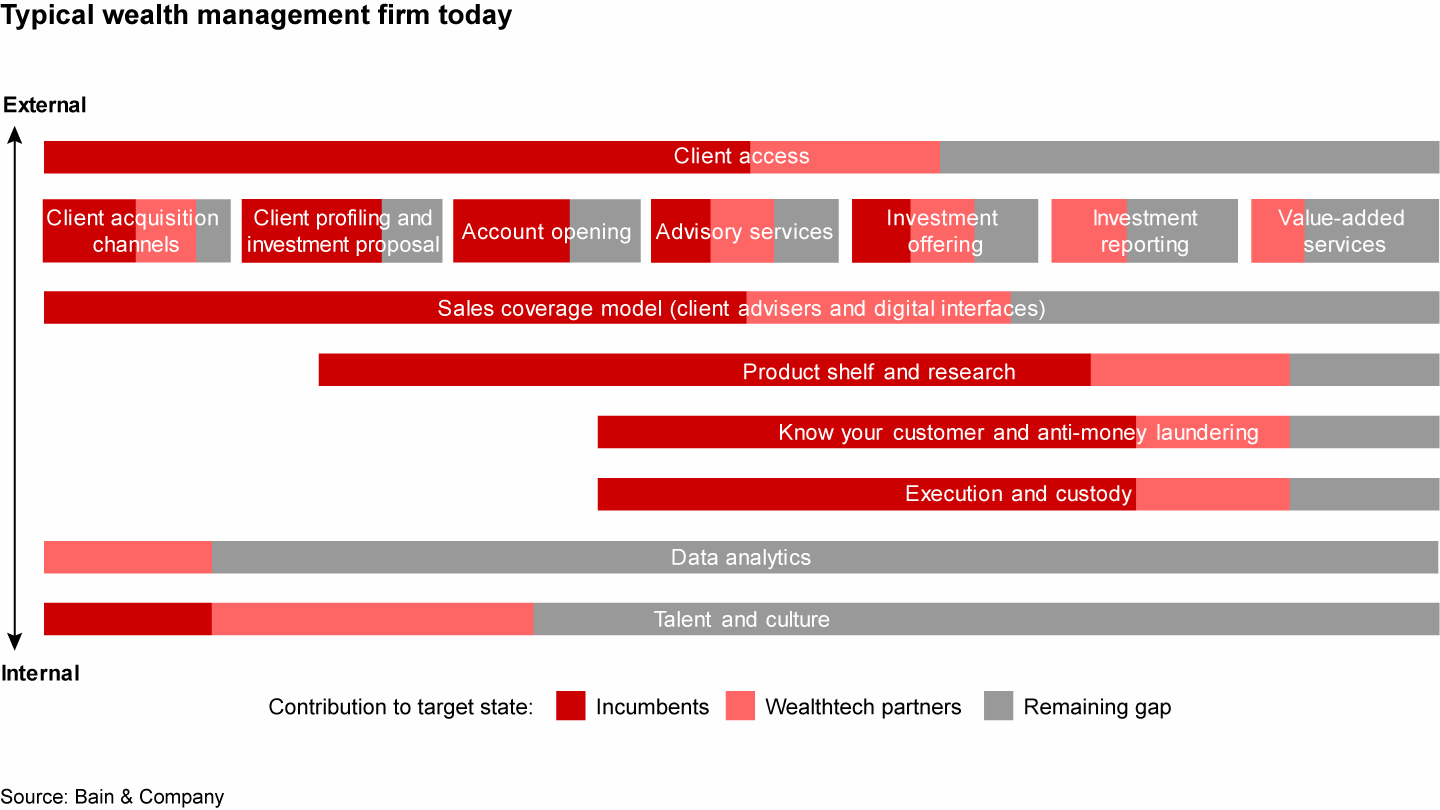Brief

Executive Summary
- Massive growth in the ranks of young, affluent investors represents a unique opportunity to tap an underserved market.
- But this emerging group has different priorities than most older clients, and they reject being squeezed into static categories traditionally used by wealth managers.
- Serving them effectively will likely entail partnerships with the expanding ecosystem of wealthtech providers.
- Wealth management firms can integrate these partners into a coherent offering through cloud-native, anything-as-a-service technologies.
Banks aiming to outperform the market and create value in the coming years will find that wealth management could propel their business to the next level. Wealth management firms, whether within banks or as standalone businesses, have benefited from rising asset prices and a recent boom in investments. Morgan Stanley and UBS, for example, have boosted their business model through wealth management growth, improving both capital efficiency and cost efficiency over the past decade.
Now, the massive growth in young millionaires represents a once-in-a-generation opportunity to tap into a promising market (see Figure 1). Many of this burgeoning group (age 20 to 45) are underserved—including professionals (69% of the young cohort), entrepreneurs (22%), and the second or third generation of wealthy families (9%).
The ranks of the wealthy are swelling


What emerging clients value
Our interviews with members of this young, affluent group reveal some important differences compared with established clientele. Among this cohort, several priorities stand out, with each respondent emphasizing some priorities more than others (see Figure 2).
- Networking. The affluent younger generation tend to be digital natives who value contact not only with their relationship managers but also with a wider community of peers, virtual and otherwise. Wealth management firms should invest in technologies that enable relationship managers to make more meaningful connections, as well as technologies that facilitate wider networks and social investing for interested clients.
- Exploring. Next-generation clients seek privileged access to novel deals or opportunities and nontraditional asset classes. In response, firms will need to offer access to insights on a broad set of asset classes, including cryptocurrency, art, and private equity.
- Self-deciding. Some of the new clients are keen to stay highly informed and make their own investment decisions. Firms should cater to such preferences, providing alerts and notifications about external factors or events in clients’ lives. By attracting this group early on, firms will be better positioned to grow their hybrid advice offerings later in their clients’ lives.
- Holistic planning. Rather than seeking product-driven recommendations, many younger clients value holistic advice geared to their broader needs, covering a wider range of asset classes and situations. Firms should offer comprehensive, personalized advice that includes deeper insights informed by data analytics.
- Simplifying. Like most younger investors, the affluent group expect a seamless experience across multiple points of contact; easy-to-use and digestible digital features and insights; and more digital communication that reduces paperwork. To accomplish this level of omnichannel integration, many wealth management companies are choosing to partner with wealthtech firms that can help them accelerate their delivery of hybrid advice.
- Influencing. Growing and preserving wealth remains a core objective for younger affluent clients. But many say they also want to have a positive influence in society. For wealth management firms, this requires evolving a trusted brand by embedding environmental, social, and governance elements alongside traditional financial elements.
Emerging clients emphasize a few priorities


Besides these attributes, emerging clients also reject being squeezed into static categories traditionally used by wealth managers. They want to select the appropriate channel, service level, or investment to suit the particular situation. Dynamic segmentation, informed by real-time behavioral data, will become an important capability for firms to develop.
Not there yet
No contender, whether bank, brokerage, or wealthtech company, has delivered an ideal end-to-end experience for this emerging segment just yet. For one thing, emerging clients’ willingness to pay and banks’ cost to serve are out of whack.
Beyond that broad disparity, customers we interviewed raised other concerns. They noted that information on many wealth manager websites was fragmented and lacked easily digestible market updates tailored to their portfolios. Advisers could be difficult to reach. Moreover, many of the firms fell short on services such as tax optimization, insurance coverage, or estate planning.
Affluent customers give wealth management firms a broad range of Net Promoter Scores (a key metric of loyalty and advocacy) at each stage, from research to getting advice, investing, and account management, an NPS Prism® survey shows (see Figure 3).
Wealth management firms have yet to deliver an ideal customer experience


Three viable routes to daylight
Can the wealth management industry rise to the occasion?
Wealthtech firms, for their part, attracted a record amount of investor funding in 2021. These challengers have ample technical capabilities. But they struggle to attain the same massive customer bases as incumbent firms and improve their per-customer economics. Brand equity still matters, and customer acquisition costs remain high. Yet incumbents and wealthtech firms working together possess the required capabilities to win over emerging segments.
Making the transition to a digitally enabled model will be a significant challenge in the coming years. For ambitious and committed companies, there are three viable paths to build up the necessary assets and capabilities.
End-to-end in-house. This model is hard to get right. It relies on building a new platform or enhancing the existing platform through in-house development. It demands dedicated teams with all the requisite capabilities and corresponding budgets. For many companies that are not already well positioned in hybrid advice, past internal efforts to build the capability have proven largely ineffective.
Consider the disappointing results of many in-house robo-advice efforts. UBS reconsidered its robo adviser SmartWealth and eventually sold the technology to wealth management start-up SigFig; Investec closed its robo adviser after just two years; and ABN Amro shuttered its German online wealth manager Prospery. Following initial excitement for a new breed of highly scalable robo advisers, their growth never lived up to lofty expectations. As it turned out, clients mostly shunned digital-only propositions, preferring hybrid alternatives instead. In addition, the cultural shift required for a start-up-like effort often did not materialize.
A few years later, wealthtech is back with a vengeance, but in a different guise. Rather than developing their propositions in-house, many incumbent wealth managers see partnering with challenger wealthtech firms as a more viable path to success.
Wealthtech acquisitions. To leapfrog competitors, some banks aim to accelerate their delivery of digitally enhanced advice and brokerage through acquisitions. With the acquisition of E*Trade in 2020, Morgan Stanley moved to shore up its digital capabilities. In 2021, JPMorgan acquired UK-based digital wealth manager Nutmeg, with more than 140,000 customers and about $4.9 billion in assets under management. As the integrations are still in early stages, it remains to be seen how the business and operating models will evolve.
Other acquisitions are designed for expansion into new regions with a scalable investment offering. UBS paid $1.4 billion for Wealthfront in order to accelerate growth in the US and boost digital capabilities to cater to the younger generation.
From the perspective of wealthtech firms, these partnerships promise a path to profitability, building on the trusted brand, product shelf and research, and established customer base of incumbent companies.
For any merging companies, forging an integrated model poses strategic and operational challenges. Even the combined capabilities of an incumbent and a challenger will rarely offer a perfect solution, so specialized partners will have to fill the gaps (see Figure 4).
Partnerships help wealth management companies start to fill capability gaps


Moreover, the price tag of a large acquisition must be weighed against the potential benefits, which might only materialize in the long term.
A modular platform. There is an alternative to building an integrated wealthtech proposition in-house or making acquisitions. Incumbents may tap an expanding ecosystem of wealthtech providers in order to address specific capability gaps, one at a time. While integrating them seamlessly remains a challenge, the advent of cloud-native, anything-as-a-service offerings now makes modular, adaptable architectures feasible.
This route avoids the hurdles of internal development, as well as the risk and cost of high-stakes acquisitions. Partnerships with wealthtech firms and other external partners open up opportunities. Launching a new, scalable digital wealth management platform that targets affluent individuals is possible in a short time frame if the team can operate independently and has the right incentives.
Goldman Sachs, for instance, is building on its current strengths in the ultra-high-net-worth segment while tackling lower tiers of the wealth scale through Marcus, its innovative digital retail offering. In doing so, the bank is also developing a portfolio of growth options in wealth management. Goldman has highlighted the need to selectively build, partner, or buy in order to create a scalable modular platform. Unlike some competitors, it has shown limited appetite for large-scale deals. One goal of such a modular platform is to lower the cost to serve various customer segments and make the bank more adaptable in focusing on client needs.
Questions to inform the next steps
Combining the assets and capabilities of established firms and wealthtech innovators still leaves gaps that will need to be filled. To address them, it’s useful to ask a set of high-gain questions that will clarify the vision of the future state and deal with specific hindrances along the path.
- Which client segments do we want to serve? If there are several, which are the highest priority?
- What do these customers value, what do they need, and how will we appeal to them?
- What capabilities are essential to serve these segments? For the capabilities where we are weak, how will we obtain or develop them?
- Which strategic assets do we possess (such as a brand, distribution network, or customer base) that give us a competitive edge?
- Which internal processes and competencies do we need in order to deliver the right proposition? And which external partners would help us accelerate to get there?
- Where should we start with a pilot to test and learn?
While the market for wealth management is flourishing, the next few years won’t offer easy, straight-line growth. The mix of affluent clients is changing rapidly, and they have needs and priorities that many wealth management firms have just begun to sort out. Gaining a deep understanding of those priorities, and developing a business that addresses them effectively, will be essential to creating value from the new surge in demand.